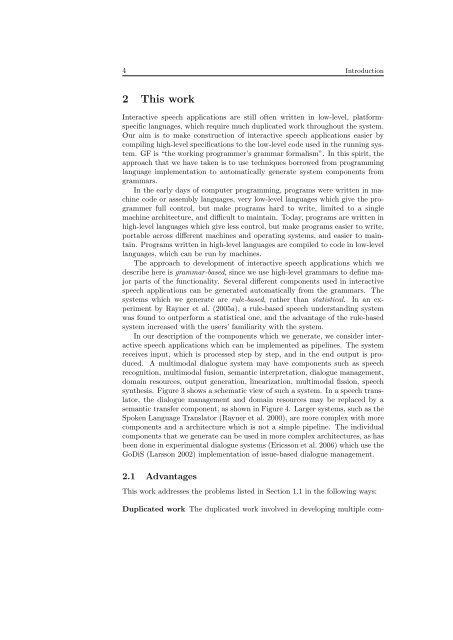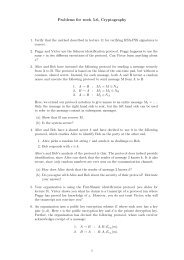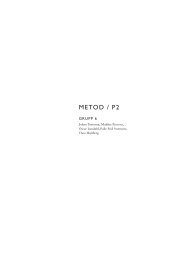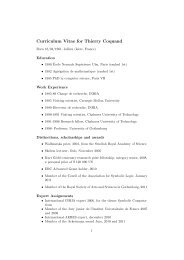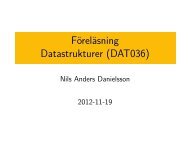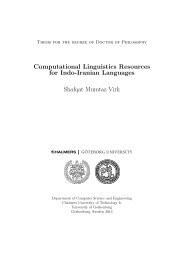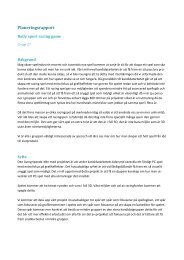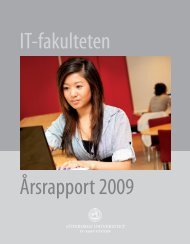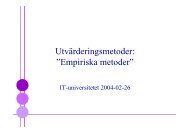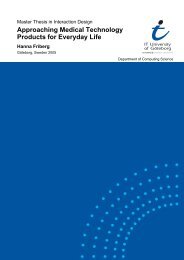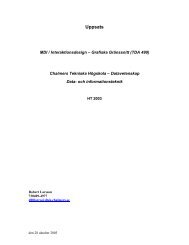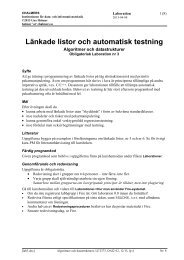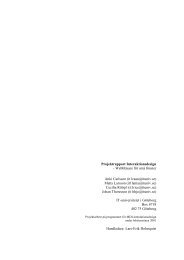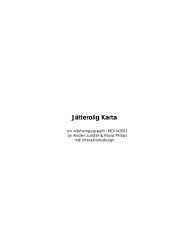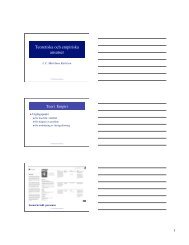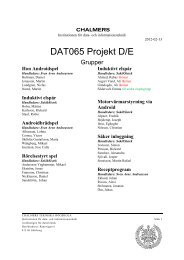Compiling Grammar-based Speech Application ... - CiteSeerX
Compiling Grammar-based Speech Application ... - CiteSeerX
Compiling Grammar-based Speech Application ... - CiteSeerX
Create successful ePaper yourself
Turn your PDF publications into a flip-book with our unique Google optimized e-Paper software.
4 Introduction<br />
2 This work<br />
Interactive speech applications are still often written in low-level, platformspecific<br />
languages, which require much duplicated work throughout the system.<br />
Our aim is to make construction of interactive speech applications easier by<br />
compiling high-level specifications to the low-level code used in the running system.<br />
GF is “the working programmer’s grammar formalism”. In this spirit, the<br />
approach that we have taken is to use techniques borrowed from programming<br />
language implementation to automatically generate system components from<br />
grammars.<br />
In the early days of computer programming, programs were written in machine<br />
code or assembly languages, very low-level languages which give the programmer<br />
full control, but make programs hard to write, limited to a single<br />
machine architecture, and difficult to maintain. Today, programs are written in<br />
high-level languages which give less control, but make programs easier to write,<br />
portable across different machines and operating systems, and easier to maintain.<br />
Programs written in high-level languages are compiled to code in low-level<br />
languages, which can be run by machines.<br />
The approach to development of interactive speech applications which we<br />
describe here is grammar-<strong>based</strong>, since we use high-level grammars to define major<br />
parts of the functionality. Several different components used in interactive<br />
speech applications can be generated automatically from the grammars. The<br />
systems which we generate are rule-<strong>based</strong>, rather than statistical. In an experiment<br />
by Rayner et al. (2005a), a rule-<strong>based</strong> speech understanding system<br />
was found to outperform a statistical one, and the advantage of the rule-<strong>based</strong><br />
system increased with the users’ familiarity with the system.<br />
In our description of the components which we generate, we consider interactive<br />
speech applications which can be implemented as pipelines. The system<br />
receives input, which is processed step by step, and in the end output is produced.<br />
A multimodal dialogue system may have components such as speech<br />
recognition, multimodal fusion, semantic interpretation, dialogue management,<br />
domain resources, output generation, linearization, multimodal fission, speech<br />
synthesis. Figure 3 shows a schematic view of such a system. In a speech translator,<br />
the dialogue management and domain resources may be replaced by a<br />
semantic transfer component, as shown in Figure 4. Larger systems, such as the<br />
Spoken Language Translator (Rayner et al. 2000), are more complex with more<br />
components and a architecture which is not a simple pipeline. The individual<br />
components that we generate can be used in more complex architectures, as has<br />
been done in experimental dialogue systems (Ericsson et al. 2006) which use the<br />
GoDiS (Larsson 2002) implementation of issue-<strong>based</strong> dialogue management.<br />
2.1 Advantages<br />
This work addresses the problems listed in Section 1.1 in the following ways:<br />
Duplicated work The duplicated work involved in developing multiple com-


